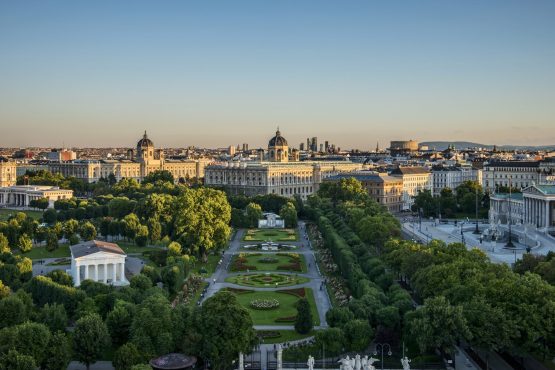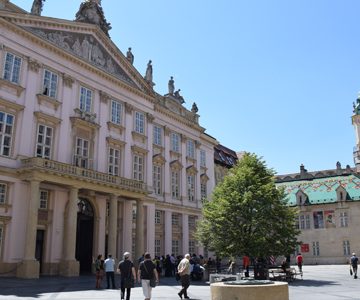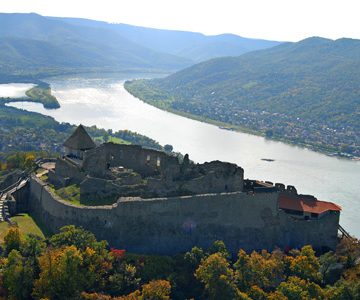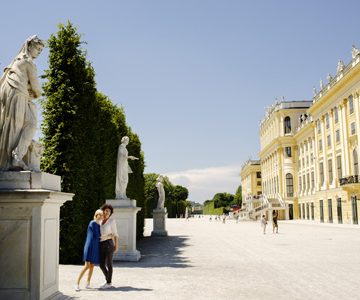The high school of the art of living
The fine way of life on the road of emperors and kings
As a political force, the nobility is insignificant in today's digital democracies. However, its refined way of life, cultivated over centuries, still exerts a more or less secret fascination on us today. This attraction takes shape, among other things, in the persistence with which the titles and predicates of nobility, which have long since been abolished by law, such as the distinguished "von," assert themselves in general linguistic usage. The weal and woe of Europe's nobility continues to provide indispensable content not only for the yellow press, and a royal wedding still generates sufficient ratings for a live TV broadcast.
This is not only due to the discreet charm of the aristocracy. First of all, the counts, barons and royal grandchildren of today are a living expression of the collective past. Few families can trace their history from the crown of the family tree to its roots as most noble clans can with their strong dynastic consciousness.
But nobility stands for more than just living tradition. Namely for a fine way of life and the ability to give life a select outer form. The noble art of living consists of a balanced relationship between pleasure and self-control, reason and sensuality, refinement and simplicity. How little the courtly way of life has lost of its charm is evident not least in the multitude of places of upscale hospitality that bear the term "court" in their house names.
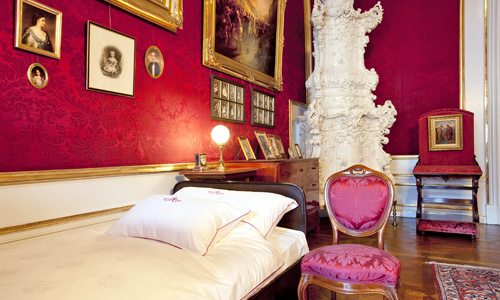
Thanks to their extensive education and highly developed taste, many nobles along the road of emperors and kings always knew how to draw the fine line between luxury and extravagance. Likewise, they knew how to surround themselves with beautiful and enduring things and create values for generations to come, as the numerous testimonies of upscale lifestyle along the Danube show. It was above all the nobility who strung the pearl necklace of monasteries, castles and artistic treasures along the Danube. They testify to the intellectual ability of the nobility to think in terms of generations and to use the available resources wisely - in order to preserve them for their descendants and, ideally, to increase them in the process. Whether by sustainably managing their estates in the most modern sense, marrying their offspring with strategic foresight or letting them make a career in the church, administration and science.
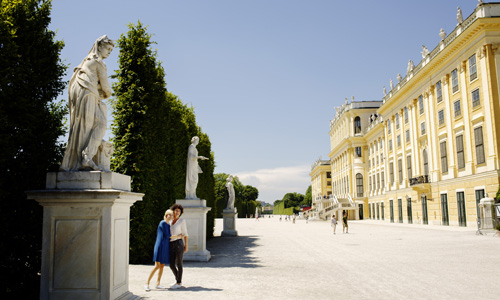
Among the grandiose testimonies to this way of life is the "high castle" that gave the charming Danube town of Visegrád its Hungarian name. Proudly perched 250 meters above the Danube, the popular king Matthias Corvinus (1458 - 1490) had the existing Gothic building remodeled and expanded into a double palace in the Renaissance style: one palace was reserved for his Italian wife Beatrix, the other for himself. In between was the court chapel in gardens that extended terrace by terrace down to the banks of the Danube and were supplied by an ingenious irrigation system. The "paradise on earth," as the royal home was reverently called, offered more than 350 nobly furnished rooms, including a ceremonial and reception courtyard. The red marble Hercules fountain has been preserved.
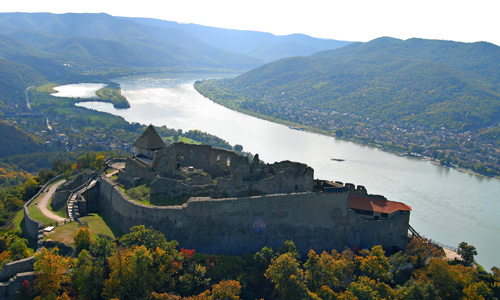
Upstream, in nearby Bratislava, a remarkable density of aristocratic palaces bears witness to cultured life and living: The Palace of the Hungarian Royal Court Chamber and the Primatial Palace, as well as the stately townhouses of the Ballassy, Pálffy, Esterházy, Erödy, Zichy and Grassalkovič families. The statue of Franz Liszt in the Keglewich Palace is symbolic of the artistic sensibility of the better Pressburg society. Babette von Keglewich, the lady of the house, was a generous patron of the Hungarian-Burgenland piano virtuoso, composer, conductor and theater man.
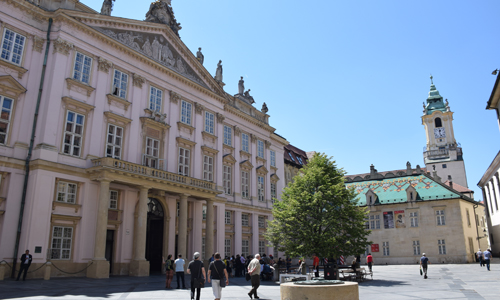
Between Bratislava and Vienna, the Danube flows through extensive floodplains rich in game, where the Habsburgs, who were keen on hunting, hunted phenomenal distances. At the center of their empire, Vienna, the traveler encounters the architectural works of art at every turn.
One of its predecessors, the Austrian Margrave Henry II - who bore the Slavic-sounding nickname "Jasomirgott" because of his favorite turn of phrase, "Yes, so help me God" - made Vienna a residential city in the 12th century. A great and knowledgeable friend of the arts, Jasomirgott set a shining example of exquisite patronage.
At the Viennese court of the Babenbergs, for their guest Walther von der Vogelweide sang of "wonnereich", the best minnesingers were at the audience hall door - and gave their poems to the best: Reinmar von Hagenau and Neithart von Reuenthal poems, as well as the anonymous author of the Nibelungenlied. Ulrich von Lichtenstein even caused a sensation as a drag queen and rode into the city as Venus in 1227 to the applause of the ladies of the court.
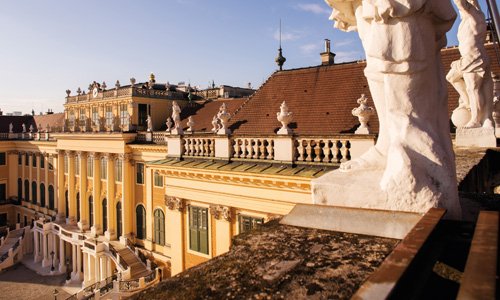
As elsewhere, the nobility in Vienna sought proximity to the court and took possession of Herrengasse in particular. The density of palaces along this 430-meter short street is unparalleled. Their names read like a who's who of the old Austrian aristocracy who came and went there. In the Batthyánypalais, for example - built by the Orsini-Rosenbergs - the aged "noble knight" Prince Eugene of Savoy used to play whist with the "beautiful Lori" Eleonore Countess Batthyány. Several of the palaces are today at least partially open to the public, especially since there are numerous representative offices and offices.
Large parts of the nearby Hofburg, which was the residence of the Habsburgs for over 600 years, are also accessible. Nowhere else is it easier to see how imperial and royal living is subject to the fashions and spirit of the respective epoch than here: Just about every ruling family had the castle remodeled and expanded according to their or the current taste.
Half a millennium of building activity transformed the house into a labyrinth of no less than 2,600 rooms, courtyards, gardens and stables, in which those unfamiliar with the place will inevitably get lost without a guide.
That the Habsburgs were also very fond of the arts is shown by the Vienna Hofmusikkapelle. Founded in 1498 by Emperor Maximilian I, the ensemble with members of the Vienna Philharmonic is the oldest orchestra in Europe.
In the Amalienburg wing of the Hofburg - it owes its name to the widow of Emperor Joseph I, who lived here for 31 years - Empress Elisabeth also set up home for a time. Among other things, she had a high bar and other gymnastics equipment on which she kept her figure. Husband Franz Joseph had his own apartment next door. As splendid as the audience rooms were, in which he received a quarter of a million visitors during his term of office, his private rooms were (and still are) spartanly furnished.

Even more than the Hofburg, however, Schönnbrunn Palace, the former summer residence of the House of Habsburg, is an expression of the imperial lifestyle. The former hunting ground of the Habsburgs got its name when Emperor Matthias is said to have exclaimed "Welch' schöner Brunn!" in 1619 in view of a spring. A palace was built on the Schönbrunn grounds for Empress Eleonora Gonzaga between 1638 and 1643, which after massive damage during the second Turkish siege gave way to a chic hunting or pleasure palace by Johann Bernhard Fischer von Erlach. During the high season, it could hardly accommodate the large court.
Under Empress Maria Theresa, the estate took on its present dimensions. With its 2,000 rooms, Schönbrunn can almost rival the cosmos of the Hofburg. Each of the ten emperor's children was allocated five rooms. The ruling family was served by about 1,000 employees. Noble fish were bred in ponds and watercourses for the imperial table, for which no fewer than 56 cooks - excluding bakers, cellar masters, butchers and court table decorators - stood at the stove. 200 bodyguards ensured the security. The entertainment of the court society was provided by 140 musicians, the literary edification by one German and one Italian court poet. Among the composers who shone at Schönbrunn were Leopold Mozart and his then six-year-old child prodigy Wolfgang Amadeus, who unabashedly kissed the monarch Maria Theresa on the cheek.
The founding of the Schönbrunn Zoo in 1752, which can thus be considered the world's oldest zoo, also took place during their reign.

Like the Babenbergs before them, the Habsburgs also indulged their passion for hunting in the Lainzer Saugarten in Vienna-Auhof. Emperor Ferdinand I bought it in 1561 and had it fenced in. Due to its density of game, it was already considered the "most distinguished game park in Europe" under Maria Theresa's father Charles VI (1685 - 1740)." In 1855, Emperor Franz Joseph I finally made it state property as the "Lainzer Tiergarten" and in the early 1880s had the Hermes Villa built as a refuge for his wife Elisabeth. With quite sensual ulterior motives, as the bedroom furnished by the famous decorative and representational painter Hans Makart with motifs from the erotically charged "A Midsummer Night's Dream" by William Shakespeare reveals.
